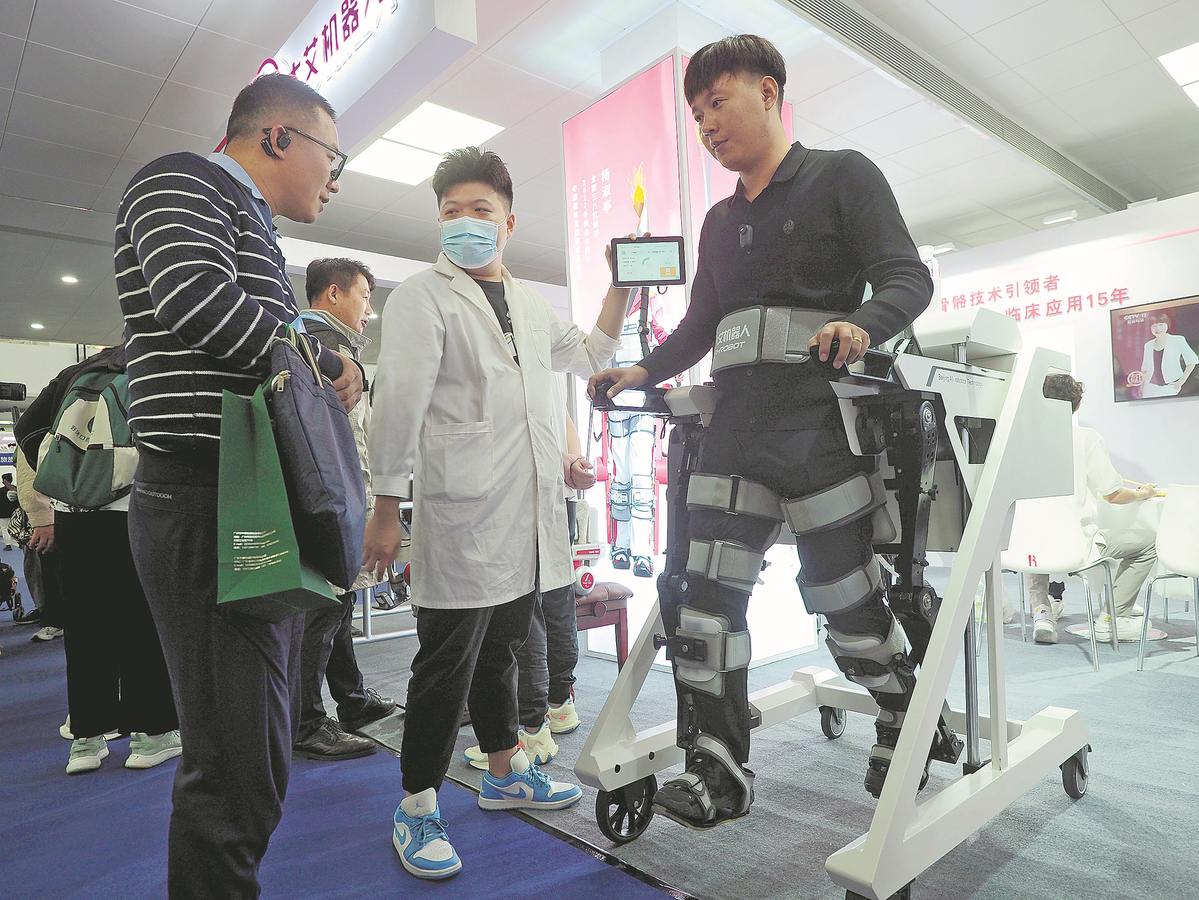
A visitor tries on an exoskeleton device during the Beijing International Ageing Industry Expo 2024 in Beijing in October. DU JIANBO/CHINA NEWS SERVICE
CHONGQING — From a console in Shanghai, French surgeon Youness Ahallal guides robotic arms in Morocco with real-time precision, delicately removing a patient's tumor.
Despite the staggering 12,000-kilometer distance between them, China's domestically developed Toumai surgical robot bridged the geographical divide to make transcontinental surgery a reality.
"With telecommunication techniques, Toumai Robot allows real-time, high-definition imaging and precise control of the robotic arms from a long distance," said Liu Yu, executive vice-president of Shanghai Microport Medbot (Group) Co, developer of the robot.
This breakthrough enables patients in underserved regions to access world-class medical expertise without enduring exhausting cross-border journeys. "The system also revolutionizes surgical workflows for doctors," Liu said. "Previously, conducting cross-regional operations required extensive travel and coordination. Now, specialists can operate remotely with high efficiency."
To date, the Toumai platform has completed around 300 remote operations, maintaining a flawless safety record.
Toumai Robot exemplifies China's rapid ascent as a pioneer in intelligent medical innovation. At the 2025 China Medical Equipment Exhibition in Chongqing in Southwest China, artificial intelligence-powered surgical systems, deep learning-enhanced diagnostic platforms and cloud-connected robotic devices dominated the showcase.
"Toumai Robot focuses on minimally invasive surgeries. It breaks through the limits of the hands of surgeons by filtering their physiologic tremor, which makes surgeries easier, safer and less invasive," said Liu.
Some medical equipment can help doctors make decisions. Longwood Valley MedTech, headquartered in Beijing, brought its orthopedic smart surgical robot with deep learning capabilities to the exhibition.
"This robot can be used in joint replacement and spinal operations as it utilizes AI to reconstruct three-dimensional images of patients' joints with CT images, based on which doctors can simulate operations and make preoperation plans," said Chen Peng, vice-president of Longwood Valley MedTech.
It usually takes one day for an engineer to make a three-dimensional image, compared to only one to three minutes by AI, Chen added.
Chen said the robot reduces operating time by about 30 percent on average. Less operating time means less anesthesia, exposure and possible complications.
During operations, submillimeter precision optical positioning ensures the precise execution of every critical step of the preoperation plans. Stable robotic arms help doctors overcome traditional limitations such as hand tremors.
In 2024, China's medical equipment market size surpassed 1.35 trillion yuan (about $188.2 billion), according to data released during the exhibition.
Medical equipment is at the forefront of technological innovation, so efforts should be given to drive the digital and intelligent transformation of the medical equipment industry, said Xin Guobin, vice-minister of industry and information technology, when addressing the event on March 15.
"It is important to accelerate the deep integration of emerging technologies such as 5G and AI with medical equipment and develop innovative application scenarios, including intelligent diagnostic systems and remote medical consultation platforms," Xin said.
Xinhua